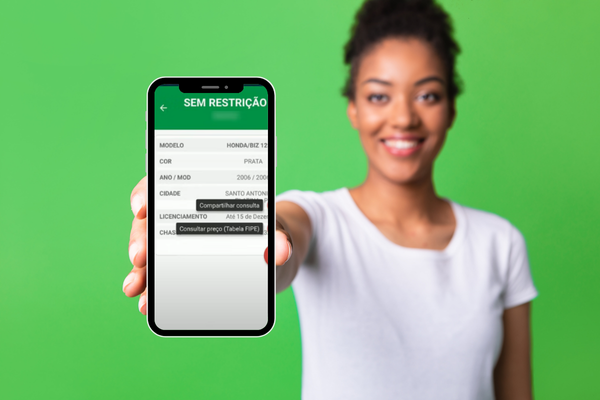Essential Tips for Getting Out of the Red and Regaining Your Financial Stability
Financial balance is a goal sought after by many, but not always easy to achieve.
When bills start to pile up and your bank balance goes into the red, it's time to act. In this article, we'll explore strategies and tips to help you get out of the red and regain your financial health.
From creating a solid budget to reducing expenses and increasing your income, we'll cover every step you need to take on the path to financial stability.
Understanding the Current Financial Situation
Before starting your journey out of the red, it is essential to have a clear understanding of your current financial situation.
This means gathering information about your income, expenses and debts. Here are some important steps to follow:
Take a Look at Your Finances
Start by organizing all your financial documents, such as bank statements, credit card statements and proof of income. This will help you get a complete picture of your situation.
Calculate your Monthly Expenses
Analyze your fixed monthly expenses such as rent or mortgage, utility bills, insurance and other essential expenses. List all expenses and add them up.
Identify your Debts
Make a list of all your debts, including the amount owed, the interest rate, and the payment deadline. This will help you understand the magnitude of your financial obligations.
Evaluate your Recipes
Calculate your monthly income including salary, investment income and any other source of income. Make sure you have an accurate picture of how much money is coming in.
With all this information in hand, you'll have a clear picture of your current financial situation and be ready to move forward.
Creating a Realistic Budget
Understanding your finances is just the first step. Now it's time to create a realistic budget that will help you get out of the red and avoid future financial difficulties.
Establish Financial Goals
Set clear and achievable financial goals. Determine what you want to achieve, such as paying off debt, saving for emergencies, or investing for the future.
Create a Detailed Budget
Based on your monthly expenses and financial goals, create a detailed budget that allocates your resources effectively. Make sure you prioritize paying off debt.
Control your expenses
Monitor your spending regularly to ensure you are sticking to your budget. Use financial apps or spreadsheets to make tracking easier.
Reducing Expenses
One of the most effective ways to get out of the red is to cut unnecessary expenses and direct these resources towards paying off debts or saving. Here are some tips for reducing expenses:
Eliminate Superfluous Spending
Review your monthly expenses and identify areas where you can save. This could include canceling unused streaming services or reevaluating your phone plan.
Make Smart Shopping
When shopping, research prices, use coupons and take advantage of promotions. Impulsive purchases can harm your budget.
Negotiate with Creditors
If you are having difficulty paying debts, contact your creditors and negotiate new payment terms. They may be willing to reduce interest rates or create a more affordable payment plan.
Increasing your Income
In addition to reducing expenses, increasing your income is another effective strategy to get out of the red. Here are some ways to do this:
Consider Extra Work
Working part-time or taking on freelance work can provide an additional source of income to help pay off debt or build savings.
Develop Skills
Invest in your personal and professional development to increase your career opportunities and earn a higher salary.
Sell Unused Items
Take a look around your home and identify items you no longer use. Sell them online to earn some extra cash.
Managing Debt Efficiently
Dealing with debt is a crucial part of getting out of the red. Here are some strategies for managing your debts efficiently:
Prioritize High Interest Debts
Focus on paying off debts with the highest interest rates first. This will save you money in the long run.
Consolidate Debts If Possible
Consider consolidating multiple debts into a single loan with a lower interest rate if that's a viable option.
Avoid Accumulating More Debt
As you work to pay off your existing debts, avoid accumulating more unnecessary debt, such as impulsive purchases or new credit cards.
Building an Emergency Reserve
Having an emergency fund is essential to avoid future financial crises. Even when you're focused on paying off debt, it's important to save some money for unforeseen events. Start with small amounts and gradually increase your emergency fund over time.
FAQ – Frequently Asked Questions
How long does it take to get out of the red?
The time it takes to get out of the red varies depending on your individual financial situation. It can take months or even years. The important thing is to stick to a plan and be consistent.
Should I use my savings to pay off debt?
It depends. If your savings are significant and earn much less interest than your debts charge, it may make sense to use them to pay down debt. However, be sure to keep an emergency fund.
How do I negotiate with my creditors?
Contact your creditors, explain your situation, and request more affordable payment options. They may be willing to reduce interest rates or create a personalized payment plan.
Conclusion
Getting out of the red and regaining your financial health requires patience, discipline and effort.
Start by understanding your financial situation, creating a realistic budget, and implementing strategies to reduce expenses and increase your income.
Managing debt efficiently and building an emergency fund are additional steps to ensuring long-term financial stability.
Remember that the road to financial recovery can be challenging, but with determination, you can achieve your financial goals and live with less worry.






